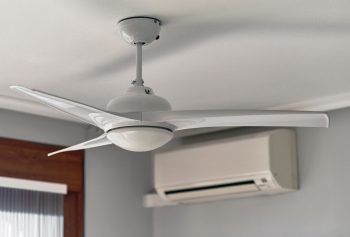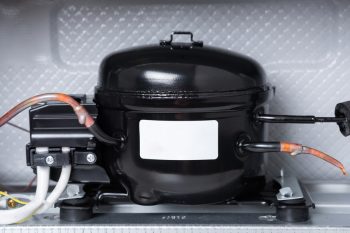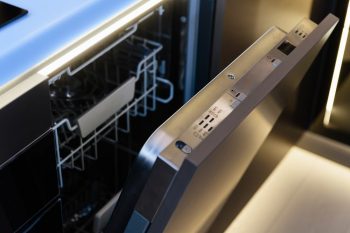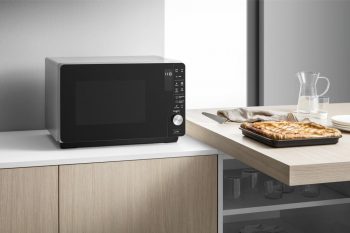
If you own a Miele dishwasher and you’re faced with the issue of it not draining, you’re not alone. It is a common problem that can be quite frustrating. However, with a little know-how and some simple tools, you can troubleshoot and fix the problem. This guide will provide you with a comprehensive step-by-step process on how to fix a Miele dishwasher that won’t drain.
To fix a Miele dishwasher that won’t drain, start by checking for error codes and inspecting the drain filter, drain hose, non-return valve, drain pump, and float switch. If the issue is a clogged filter or drain hose, remove the lower rack, clean the filter assembly, check the drain pump and non-return valve, inspect the drain hose, and check the garbage disposal. If the dishwasher pump is broken, it will need to be replaced. If the drain valve or impeller is faulty, it can be repaired or replaced. If the problem persists, it’s best to call a professional. Regular maintenance can help prevent future draining problems.
Understanding the Problem
The most common reasons why a Miele dishwasher won’t drain include a clogged drain filter, blocked drain pump, kinked drain hose, clogged drain line, failed non-return valves, circulation pump failures, and stuck intake valves.
Diagnosing the Problem
To diagnose the exact problem, start by checking for error codes. A Miele dishwasher will display an F11 error code when there’s a drainage fault. Next, inspect the drain filter, drain hose, non-return valve, drain pump, and float switch.
Necessary Tools and Materials
Before you start, gather the necessary tools and materials. You’ll need a towel or cloth, a screwdriver, a flashlight, a pair of pliers, and a bucket or container.
Fixing the Problem: Clogged Filters or Drain Hoses
- Remove the lower rack: This will give you access to the filter assembly.
- Clean the filter assembly: Turn the filter handle counter-clockwise and lift up to remove the filter assembly. Rinse the filter under running water to get rid of debris.
- Check the drain pump and non-return valve: Clean any debris or obstructions found in these areas.
- Inspect the drain hose: Check for kinks or blockages. If the clog can’t be reached, the drain hose may need to be replaced.
- Check the garbage disposal: If your dishwasher is connected to a garbage disposal, ensure it’s not clogged.
- Reassemble and test: After cleaning and checking all the components, reassemble the dishwasher and run a test cycle to ensure proper drainage.
Fixing the Problem: Broken Dishwasher Pump
If you suspect that the dishwasher pump is broken, you’ll need to replace it. Remember to disconnect the dishwasher from the power source before you start. You’ll need a flat-head screwdriver, a cross-head screwdriver, and a pair of pliers. Follow the instructions provided in the section above to replace the pump.
Fixing the Problem: Faulty Drain Valve or Impeller
If the drain valve or impeller is causing the draining issue, it can be repaired or replaced by following the steps provided in the section above.
When to Call a Professional
If you’ve tried all the troubleshooting steps and the problem persists, it’s time to call a professional. The typical cost to repair a dishwasher ranges from $160 to $300, with an average of $200. However, the cost can reach as high as $600 or more, depending on the issue and the service provider.
Preventing Future Draining Problems
To prevent future draining problems, regularly clean the dishwasher filter, use the right amount of detergent, perform maintenance cleaning, check and clean the drain pump, inspect the drain hose, clean the garbage disposal, and use Miele’s dishwasher cleaning products.
Remember, regular maintenance of your Miele dishwasher will not only prevent future draining problems but will also extend the life of your appliance.
We hope this guide has been helpful in addressing your Miele dishwasher draining problems. Don’t hesitate to reach out to a professional if you’re unsure about any part of the process. Happy dishwashing!
Frequently Asked Questions
How often should I clean the filter of my Miele dishwasher?
It’s recommended to clean the filter of your Miele dishwasher at least once a month. However, if your dishwasher is used heavily, you may need to clean it more frequently.
How do I identify the drain pump in my Miele dishwasher?
The drain pump is usually located at the bottom of the dishwasher. It’s a cylindrical component with an impeller at the bottom. It’s connected to the drain hose and is responsible for pumping out the water from the dishwasher.
What does the non-return valve in my Miele dishwasher do?
The non-return valve in your Miele dishwasher is designed to allow water to flow in one direction only – out of the dishwasher. This prevents dirty water from flowing back into the dishwasher after a cycle.
Are there any specific Miele dishwasher cleaning products I should use?
Miele recommends using their own branded cleaning products for best results. They offer a range of cleaning and care products specifically designed for Miele dishwashers.
What can cause my Miele dishwasher’s drain valve or impeller to fail?
Drain valve or impeller failure can be caused by factors like wear and tear over time, a heavy load, or a foreign object getting stuck. It’s always recommended to scrape off food remnants before loading your dishwasher to prevent such issues.












